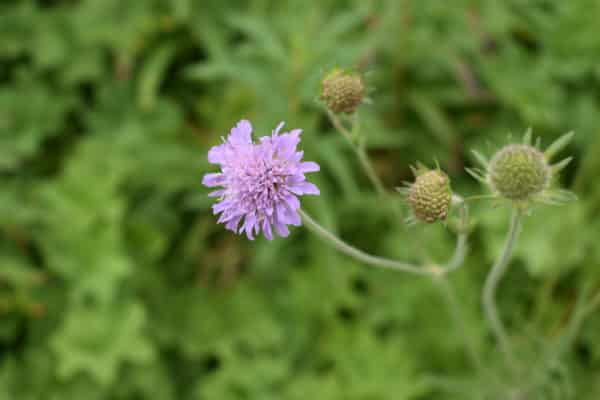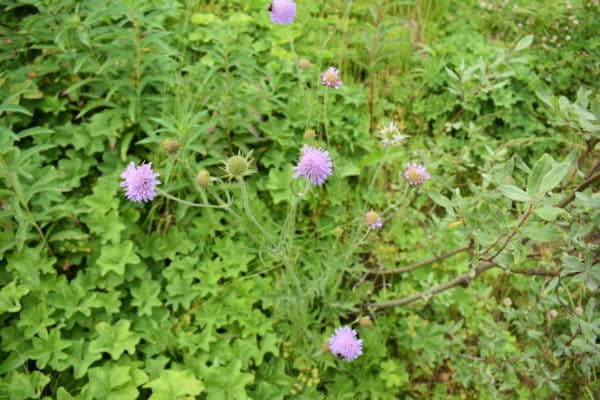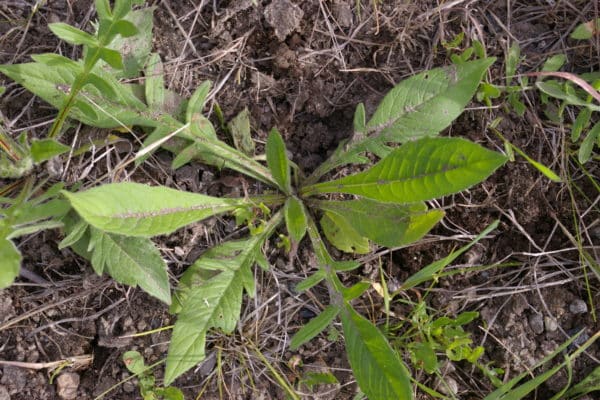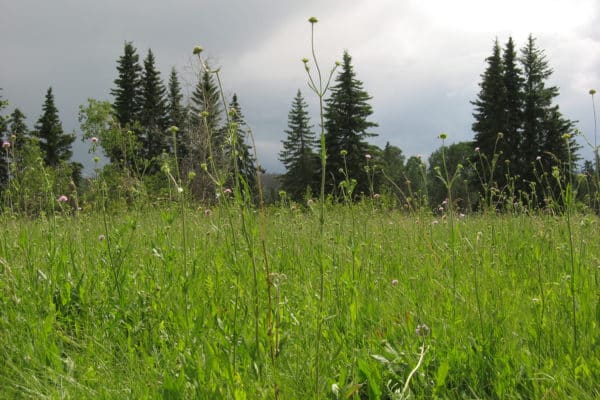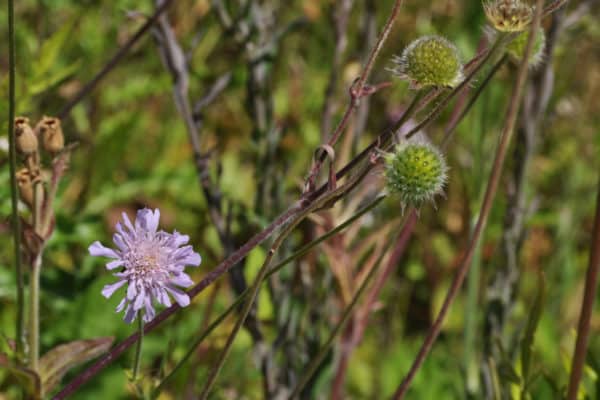Field scabious
About This Species
Field scabious crowds out forage and pasture plants, reducing food availability for grazing animals. It grows along disturbed roadsides throughout the province. It is an escaped ornamental popular for its pretty flower and ability to attract butterflies from its native range of Europe and Asia. A single plant can produce up to 2,000 seeds, which makes this plant difficult to remove once established. Field scabious is designated as a Regional Noxious Weed by the BC Weed Control Act, as well as a Regional Containment/Control species by the BC Provincial Priority Invasive Species List.
How to Identify
Field scabious is a short perennial plant with hairy, upright stems and a well-formed taproot.
Its flowers are large, violet to pink, clover-like and grow on long leafless stalks.
Its leaves grow in rosettes which are hairy, coarsely toothed, feather-shaped and variable lobed.
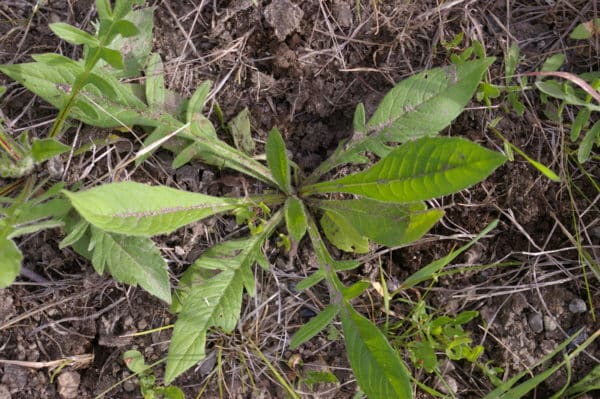
Take Action
Prevent Field scabious from invading by regularly monitoring pasture lands for infestation. To remove, cut or mow plants prior to seeding. Do not attempt to remove via pulling out the plant– it is very difficult to fully remove the long roots, and root fragments left in the soil can grow into a mature plant.
-
If you need advice about invasive species on your property or you are concerned about reported invasives in your local area, contact your local government or regional invasive species organization.

Plantwise
Learn about best practices
A few non-invasive alternatives to plant instead of Field scabious include:
- Columbines (Aquilegia cultivars)
- Common harebell (Campanula rotundifolia)
- Masterwort (Astrantia major)
- Hybrid yarrow (Achillea millefolium hybrids)
- Bee balm (Monarda didyma)
REPORT TO PROTECT BC’S BIODIVERSITY

Use the app
Observe and report to protect BC’s biodiversity

Report through this website
Use our form to tell us what you’re seeing and where.



